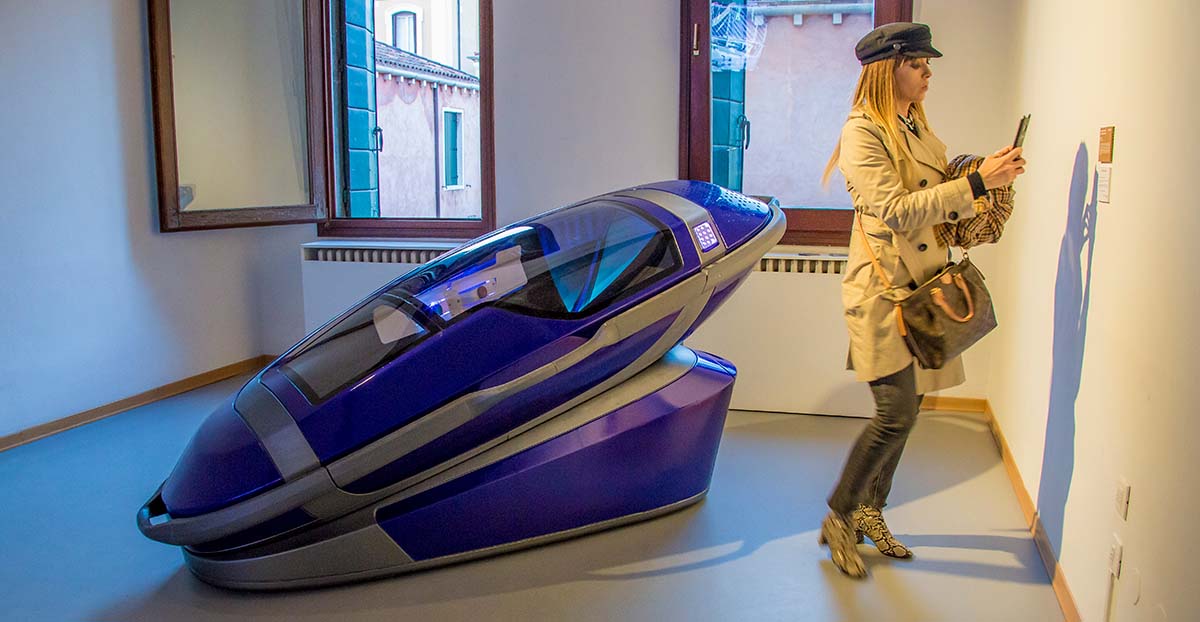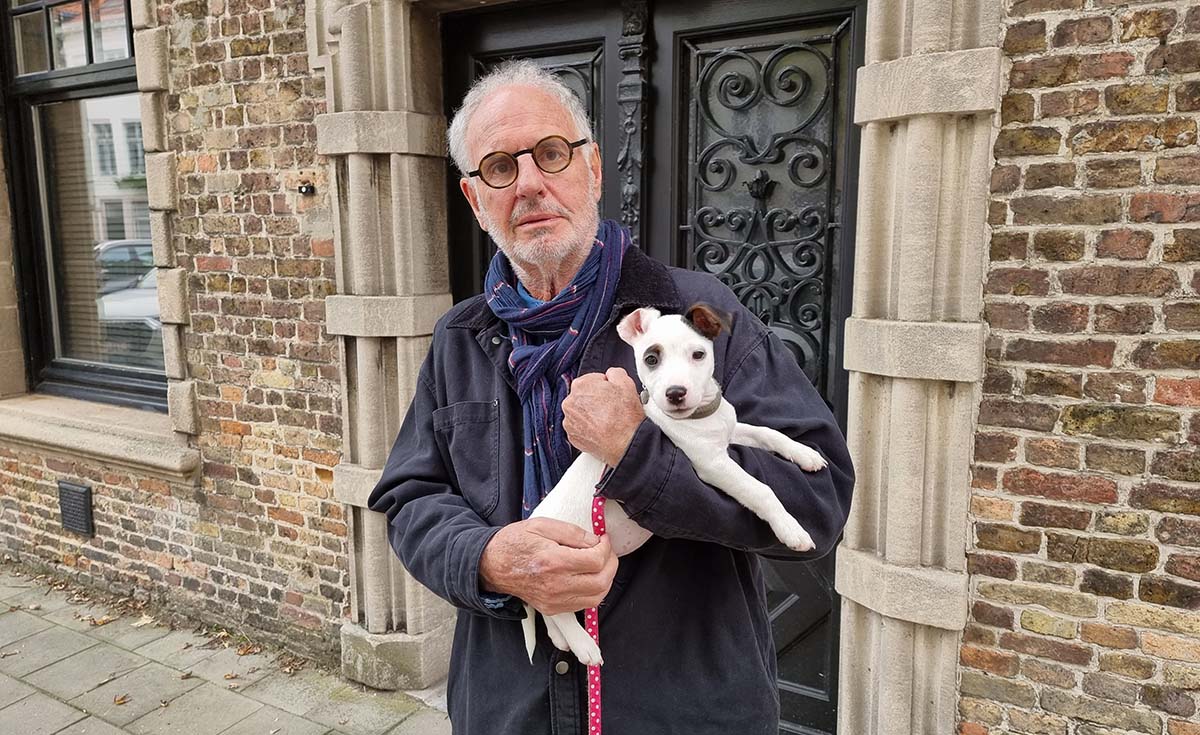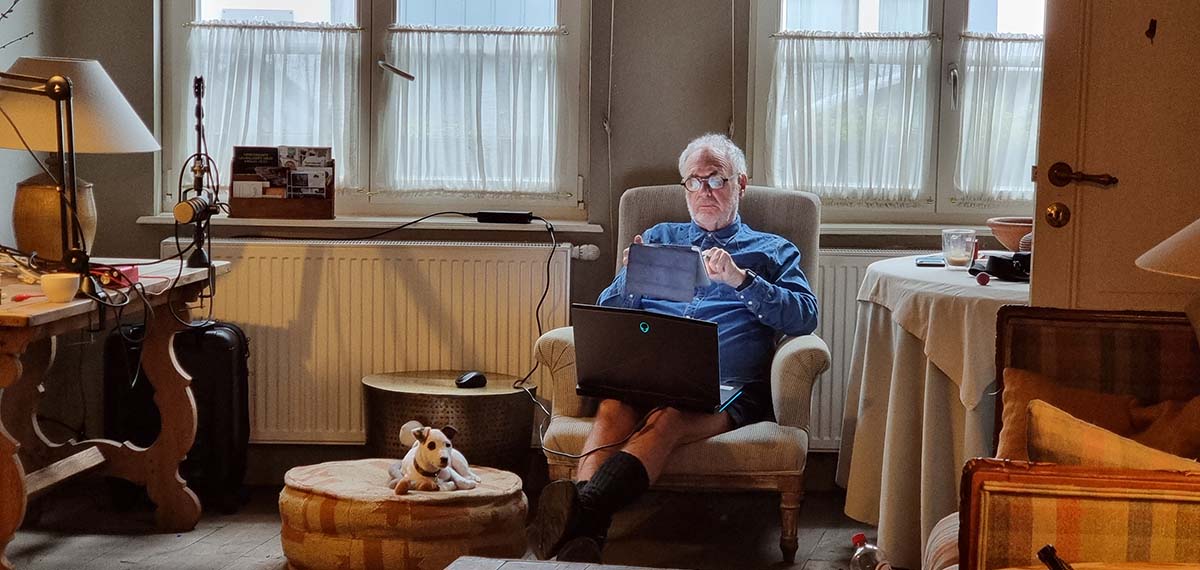
Dear Exit Members, Peaceful Pill eHandbook Subscribers & the broader Exit community,
This open letter is to thank you for your support during 2021 and to wish you all the best for the year ahead.
As we all know (and feel), 2021 was another difficult year, regardless of what part of the world we live in.
Just when we thought C19 was subsiding, along comes a new variant that brings the statistics and the lived reality of the pandemic back into our everyday lives.
The only upside of Omicron is surely that a less-infective phase of a pandemic is the beginning of its end. Let us hope that that is the case.
Here in the Netherlands, we are currently in lockdown yet again.
As one of the slowest countries in the EU to roll out boosters, the Netherlands has been the first to bring life, as we know it, to a halt, again: all in an effort to save lives and protect those who work in front line health and emergency services.
And this lockdown is the harshest this country has seen. Everything is closed, save for supermarkets, pharmacies and banks. The essentials of life, death and taxes.
There is nothing like a surprise shut-down to force the team at Exit to think hard and fast about the best way to achieve the objectives of the organisation and to help Members & Subscribers in the year ahead.
Peaceful Pill eHandbook Update Webinars – 2022

I am pleased to announce that the flagship program for Exit in 2022 will be regular Update Webinars which will be based on, and coincide with the regular Updates to the Peaceful Pill eHandbook.
Every time a substantial update is made to the Peaceful Pill eHandbook, I will host an online Update Webinar.
These Webinars will provide an overview of the changed content in the PPeH and allow for participant Q&A.
The Webinars will be held on the last Wednesday of the month at 21.00 GMT. Check your time zone.
To find out more about the terms & conditions and other details, please visit the Update Webinar page on the Peaceful Pill Handbook Website.
I look forward to seeing you on Wednesday 23 February for the first Update Webinar on ‘the Sarco’ (which is the subject of the February 2022 update to the Peaceful Pill eHandbook).


Speaking of which, 2021 closed out with significant media coverage of the Sarco project.
This media was brought about by the surprise publication of an article (written 12 months earlier in late 2020 by journalist Clare O’Dea) for the SwissInfo.ch online news platform.
It has been interesting that, almost without exception, the right to die movement has had overwhelming criticism for the project.
This could mean a few things.
The guessing could go on, but I won’t.
Why?
Because in contrast to the sometimes fanciful comments made by our right to die colleagues about the 101 reasons why Sarco is a bad idea, is the feedback from ordinary people around the world.
Yes, Sarco is ‘utopian’ as Jan Clifford has said, and it is ‘brave new world stuff, previously un-thought of’.

Sarco is not just about dying somewhere beautiful at a place of one’s choice.
(Because Sarco is portable, there is no limit to desirable locations where one can leave this life.)
Nor is Sarco only about getting doctors out of the dying picture.
At its most fundamental, Sarco is about putting control back in the hands of the person whose death it will be.
Mental Capacity & Child/ Elder Abuse
For a person to use Sarco in Switzerland, there will need to be a medical check of mental capacity.
Sarco will be used by elderly adults whose mental capacity to take this most important step has been established.
Swiss law requires that a person seeking death has mental capacity, and this is currently assessed by a Swiss medical professional.
Once this assessment has been made, a person’s use of Sarco will be the ultimate act of self-determination and of autonomy.
This is why Dr Stephen Duckworth’s comments in both the Independent and the NYT need correction.
Dear Stephen Duckworth (OBE FKC PhD MSc LRCP MRCS FDSRCS (Hon)),
You ask ‘What if it [Sarco] is accessed by someone not in their right mind?
Or a child?
Or if it is used to abuse others?’
For the reasons outlined above, any elderly or seriously ill adult who opts to use a Sarco in Switzerland would not be able to do so if they do not have the mental capacity to do so. It is just not going to happen.
Switzerland has this safeguard for a reason.
Regarding age, while the Netherlands allows children to request euthanasia, Switzerland does not.
No child will be able to use Sarco (as unfair as that may be for a seriously ill child) in Switzerland.
In terms of the possible use of Sarco to harm others, the main points of Swiss criminal law are worth revisiting here.
For an assisted suicide to be lawful in Switzerland the person must do the procedure themselves.
This is why the activation button for Sarco is within the capsule, not outside it.
A person cannot be forced into Sarco and then killed. The process can only be initiated by the person who is inside Sarco and whose death may be about to take place.
Stephen’s final comments also deserve a quick clarification.
The peaceful Sarco death is no virtual reality experience. It will be real.
I can only assume that Stephen is confusing the final Sarco model with a VR software program that was used at the Amsterdam Funeral Fair in April 2018 to give visitors a sense of what it feels like to lie inside the capsule.
In regard to the points made by Final Exit Network (USA)’s director, Janis Landis.
Janis told the NYT, ‘I am concerned about the availability of any device that allows vulnerable, emotionally depressed individuals to impulsively [ die by] suicide.’
Dear Janis,
Please fear not. For the reasons above, the person’s mental capacity will have been signed off by a medical professional.
If the person were considered to be ’emotionally depressed’ and wanting to ‘impulsively suicide’ (irrational suicide), then they would be referred to mental health services. They would not be a candidate for being helped to die in Switzerland.
This is not to say that depressed people are not helped to die in this country, for they are helped.
Depression, on its own, however is not an indicator of mental capacity.
Nor does depression prevent a person from making a considered, long-held decision to end their life in the context of illness or advanced old age.

The Sarco uses Nitrogen to create a hypoxic (low oxygen), hypocapnic (low carbon dioxide) environment inside the capsule.
This is not death by nitrogen gas per se. It is death by a lack of oxygen.
The air that we all breathe contains ~ 80% nitrogen and 20% oxygen.
If the oxygen is removed, we would all quickly lose consciousness and die shortly after.
The Sarco uses liquid nitrogen to create this necessary low/ no oxygen environment.
It is the lack of oxygen and an associated low carbon dioxide level that results in a quick and peaceful death.
So when Judy Epstein, president of End of Life Choices California says ‘the idea of dying by gas would remind too many Americans of the Holocaust, or of the way some US prisoners are executed. That would be a very hard sell in this country’, she needs to be corrected.
Dear Judy,
Sarco does not cause death by gas. It causes death by low oxygen.
Holocaust deaths and capital punishment gas chambers never used hypoxia. Rather, it was the use of poisonous gases such as Hydrogen Cyanide (Zyklon B) and Carbon Monoxide.
Now that we have explained the process to Judy, we hope she is better able to understand the science and, as a result, make informed commentary should the opportunity arise again.
Lacking Human Touch
Nor does Sarco lead to the cold, lonely death that others have suggested.
For example, if couples were wanting to go together, Sarco would also be able to accommodate this.
Together in life as in death.
And, for many people, death is not always a time when one wants one’s loved ones present.
The Dutch right to die group NVVE recently conducted a survey of their members and whether the dying person died with their closest family members/ friends by their sides.
In the December 2021 edition of Relevant magazine it was reported that there were just as many testimonials of death occurring once the loved one had left the room, as when family/ friends were present.
So, it is not always correct to assume that the dying person always wants human touch.
Besides, many people seeking a VAD in Switzerland request Exit’s ID service.
They need Exit’s involvement because they have come to Switzerland on their own.
There is no question here of hand-holding. Such closeness is neither requested nor desired.

Clearly, the Sarco will never be for everyone.
As Ellie Ball, media and campaigns manager at Dignity in Dying England has said ‘assisted dying should be “embedded in healthcare” so that terminally ill people could make informed decisions with advice from their family and doctors instead of killing themselves behind closed doors. The Sarco doesn’t solve that problem, it perpetuates it.’
Of course, Dignity in Dying has long held the view that only people who are terminally ill (with < 6 months to live) should be able to get help to die. They believe too that it should rest with the medical profession to provide their approval and permission for the help to be provided.
If a person has a family, it is appropriate that those people are consulted about the pending death; not in terms of the family granting permission but as a due courtesy which may be beneficial to all concerned.
Exit knows of cases where a person has arrived in Switzerland for a VAD, only to be found to have failed to tell their loved ones of their plans. There is at least one legal case pending where the family is seeking prosecution over wrongful death.
There is another case where an American man had a VAD booked for before Christmas. However, he then elected to stay on to January at the wishes of his children, to ensure goodbyes could be said.
While sometimes families do try and stop their family member from dying (and this is a concern that must be taken seriously), overall there is little to be gained by not informing people closest to you that you plan to die in Switzerland.
Whether they plan to use the Sarco or have a Nembutal infusion is not the point.
It is the conversation that is important, not the means selected.
Ellie, we hope this allays your fears.
As to who deserves help to die – whether it is only the terminally ill or also people of advanced old age – we will have to continue to agree to disagree.
And, finally, a message to Sylvan Luley and his Dignitas organisation.
In recent weeks, Sylvan told various media that he ‘would not imagine that a technologised capsule for a self-determined end of life will meet much acceptance and/or interest in Switzerland’.
I guess he is speaking from experience because in March 2008, Dignitas attracted unfortunate press after their decision to substitute the use of Nembutal with plastic Exit bags.
In March 2008, the Daily Mail wrote:

The controversial Euthanasia group Dignitas has started helping people kill themselves by putting a plastic bag filled with helium over their heads – and filming it. There are at least four known cases of the new method of suicide.
The suicide is supervised by members of the group who video the procedure to prove it was all voluntary. They then send the tape to the crown prosecutor as evidence.
Juerg Vollenweider, deputy head of the Zurich Oberland Crown Prosecution, confirmed that Dignitas has used the new method for the first time on February 18.
The move to plastic bag deaths is because the other method currently used of a lethal injection needs medical supervision and prescription controlled drugs, and is therefore more costly and complicated.
Fast-forward 13 years and Dignitas is now telling Euronews that it ‘doubts the Sarco’s do-it-yourself method would find acceptance in Switzerland, which has a 35-year history [sic – Dignitas was founded 23 years ago in 1998: a year after Exit International was founded] of non-profits and doctors working together to help facilitate assisted suicides’.
Interestingly, the brief that guided the design of Sarco was beauty. We wanted Sarco to be a beautiful object in form and futuristic in modus operandi. Characteristics that the Exit Bag is not.
Another point of historical interest must be that when Dignitas trialed their plastic bag method, the criticism they received at the time is remarkably similar to some of that laid at the feet of Exit today.
In March 2010, The Atlantic wrote:

Death by poison gas carries certain historical associations in this part of the world, and the public responded with predictable disgust.
In Zurich, I asked a Swiss physician who has done extensive research on assisted suicide what he thought of Minelli’s demonstrations.
“The helium cases are the worst thing he has done,” he said.
“It’s completely weird, because gas, of course, is associated with the Nazi death camps.
Minelli knew that, but didn’t care.”
While Dignitas might claim that their method of assisted suicide (using oral Nembutal) is ‘approved, and supported by the vast majority of the public and politics’, this has clearly not always been the case.
As the Daily Mail article sets out, one of the reasons why Dignitas turned to the hypoxic death in 2008 was because a VAD using Nembutal involved ‘medical supervision’ and prescription-controlled drugs’ and was ‘costly and complicated’.
The Atlantic explains that this turn towards the plastic bag was rooted in the then new requirement that all foreign VAD candidates be reviewed by not one but two medical professionals.
This was ostensibly to prevent doctors from making so-called ‘hurried decisions’ (approvals) for people flying in for a quick VAD.
‘The [plastic bag] suicides’ it was reported ‘gave Minelli the opportunity to experiment with new methods and served as a not-so-subtle reminder that, if necessary, he could continue on even without doctors and their sodium pentobarbital’.
Plus ça change …
This brings me to a final point. Cost

The Cost of Sarco: Part I
At the current time in Switzerland a VAD retails at CHF10,000. This is regardless of which of the three main organisations which cater to foreigners is involved.
Prices seem fixed at this curious amount with no one organisation about to challenge the market.
Indeed, the cost of a VAD was one of the driving principles behind the creation of Pegasos. Whether this principle still holds true at Pegasos (who mirrors the exact same charges as Dignitas and Lifecircle) is yet to be determined.
(Pegasos readily acknowledge that a lethal dose of Nembutal costs them around CHF50.)
Each medical professional reportedly costs around CHF1500.
Apart from other staff and operating costs, each organisation has its costs well covered by the fees it charges.
Sarco, on the other hand, would operate virtually free. The cost of the required amount of liquid nitrogen is around €20.
And if Sarco is used in an open field, amidst the beautiful nature for which Switzerland is so rightly famous, the VAD will be a fraction of the current cost.
It is about time that the cartel that surrounds the price of a Swiss VAD is challenged.
The Cost of Sarco: Part II
I am often asked how expensive the Sarco will be to print.
I am not yet in a position to fully answer this question.
What I do know is that its printing price is dropping rapidly.
At the time of writing, the printing of Sarco is costing around €15,000.
This is not cheap but we now see Sarco as a device that can be used multiple times. Only the liquid nitrogen needs to be replenished.
The high cost is also a safeguard.
Not in the foreseeable future would a vulnerable young person be able to print a Sarco and use it for their irrational suicide.
At least not as long as there is rope, or guns or tall buildings or fast-moving trains to name but a few of the tragic, leading causes of suicide in the developed west.
Rather, Sarco is a niche option for those who do not want / or are unable to drink Nembutal or receive it via needle intravenously or rectally.
This includes people who may have a serious disability like Tony Nicklinson, the man who inspired our Sarco journey all those years ago.
It was in the context of Tony’s desire for a peaceful end that the seed of Sarco was planted.

In Summary
With the Sarco capsule, Exit realises that we need to tread lightly on Swiss soil.
After all, it is important to show that one has learned from the past mistakes of others.
Let us not repeat the mistakes of history. Rather, let us show we can move on to a future that is responsible; but which also puts the autonomy and self-determination of the individual centre of their stage.
Dying well is a human right. I am sure you would agree.

I began my journey in the end of life choices field in 1995 in Darwin Australia when the Northern Territory voted to bring in the Rights of the Terminally Ill Act.
I was working as a doctor in Darwin. I thought the law a good idea and I spoke out publicly in support.
I was 48 at the time. I am now 74. This is a lot of time to have witnessed change.
Historical insight is a precious thing, as is knowing when the argument wheel is being reinvented.
Sarco may or may not be my final project.
But, for now, it is my most important.

In Other News – Recommencing in January 2022
I wish you all a safe, healthy and satisfying new year and 2022.
Philip Nitschke